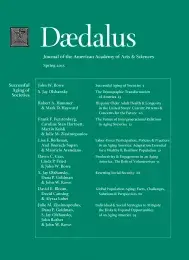Hispanic Older Adult Health & Longevity in the United States: Current Patterns & Concerns for the Future
The Hispanic population aged sixty-five and over – the most socioeconomically disadvantaged subset of America’s elderly – is projected to quintuple between 2012 and 2050. While current longevity patterns for Hispanics relative to whites are favorable, old-age functioning and disability patterns for Hispanics are unfavorable and have serious implications for caregivers; families; and local, state, and federal governments. Troubling signs for the future Hispanic population (which are shared to varying degrees with other vulnerable groups) include the unresolved legal status of unauthorized immigrants, continued low levels of insurance coverage even after health care reform, some unfavorable trends in health behaviors, and continued disadvantages in educational attainment and income relative to whites. We urge policy-makers to deal with these potentially problematic health and well-being issues. Not doing so could have detrimental consequences for the future of the Hispanic population as well as other at-risk groups and, by extension, the U.S. elderly population as a whole.
Demographic data make clear that Hispanics will play an increasingly prominent role in the overall health profile of U.S. society as the twenty-first century progresses. By the year 2000, Hispanics had become the country’s largest minority group at just over 35 million people, or one-eighth of the total population. Between 2000 and 2010, the Hispanic population grew an additional 43 percent to over 50 million people and increased its share of the population to 16.3 percent.1 Furthermore, the U.S. Census Bureau projects that the Hispanic population will grow to 112 million by 2050 and account for 28 percent of the total population.2 Should the reality of future population changes come anywhere close to Census Bureau projections–and at present we see no reason why it will not–it is straightforward to see that the future health patterns of U.S. society will increasingly reflect those of the Hispanic population. . . .
Access the full volume here.
